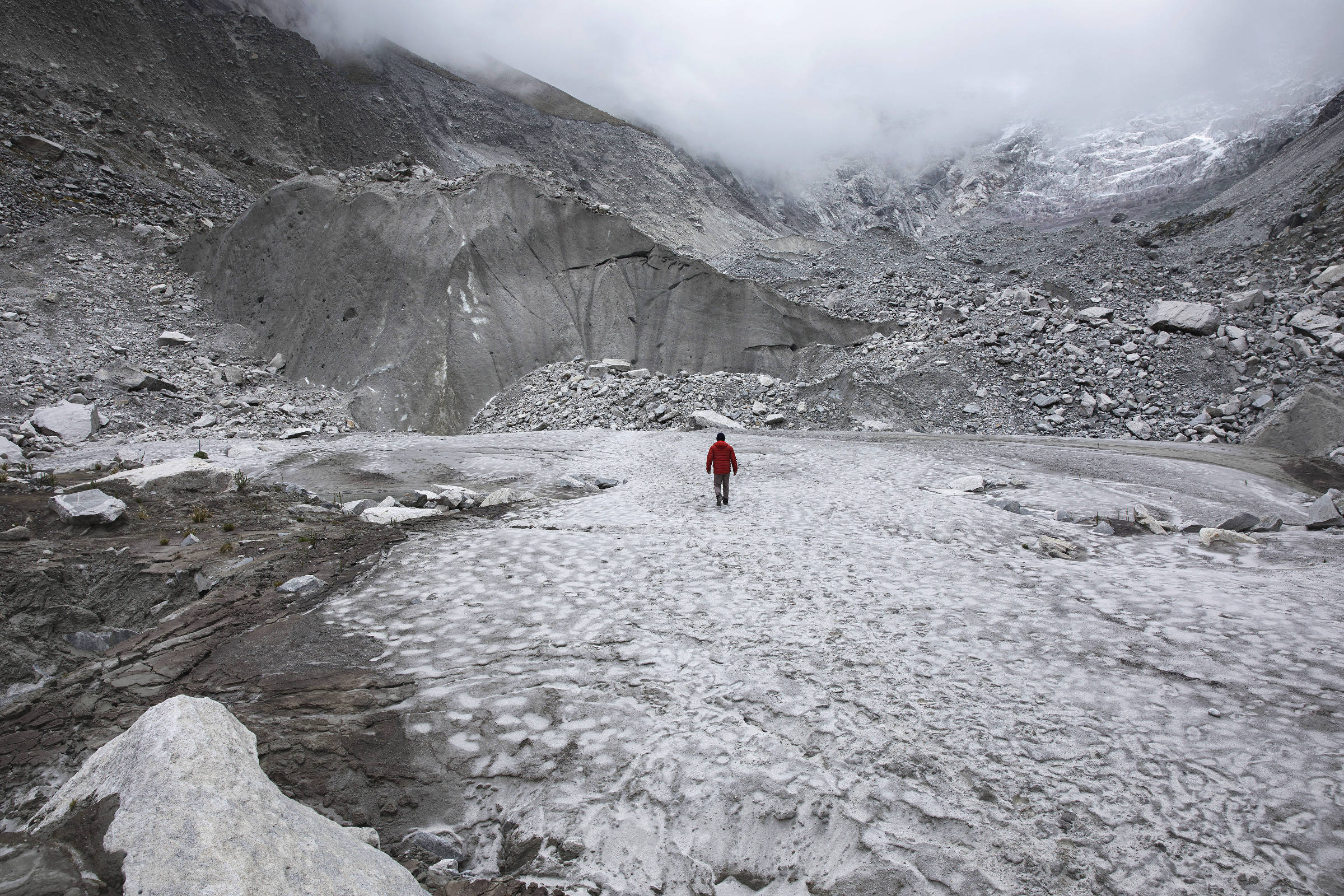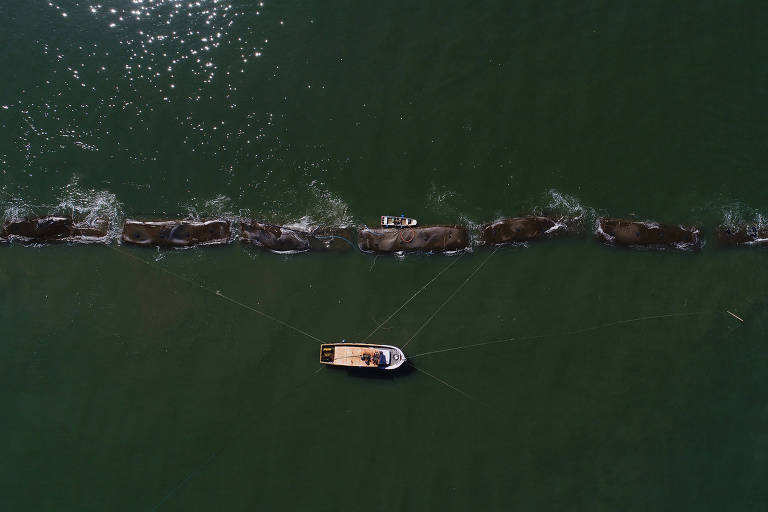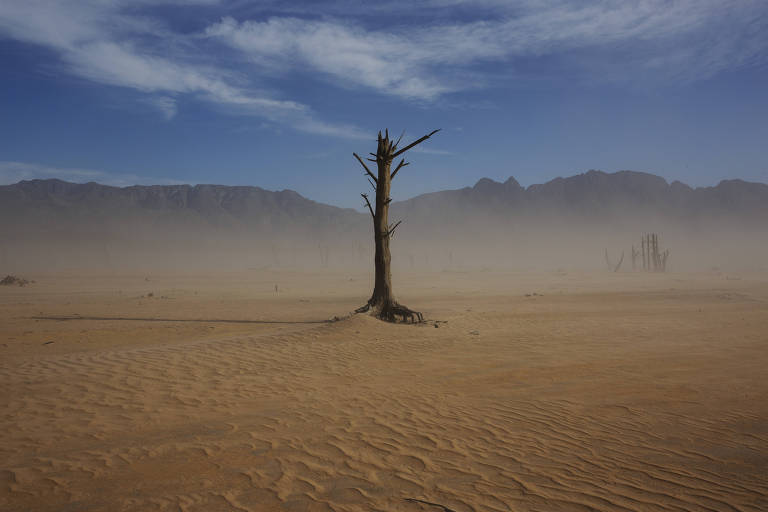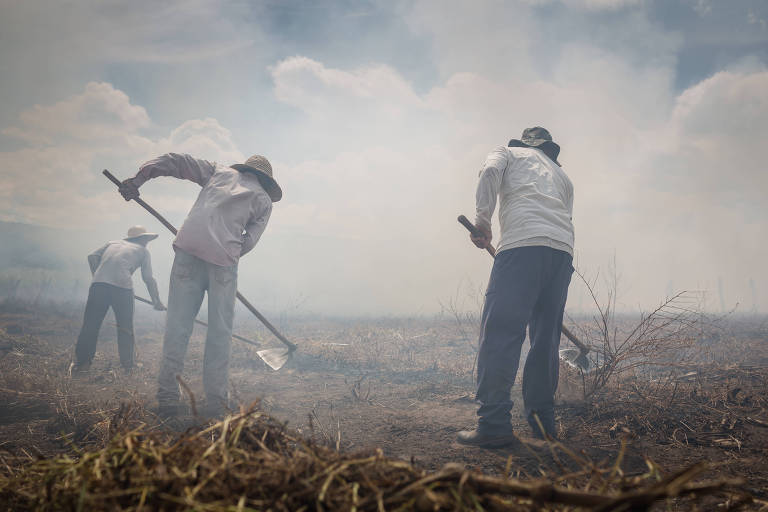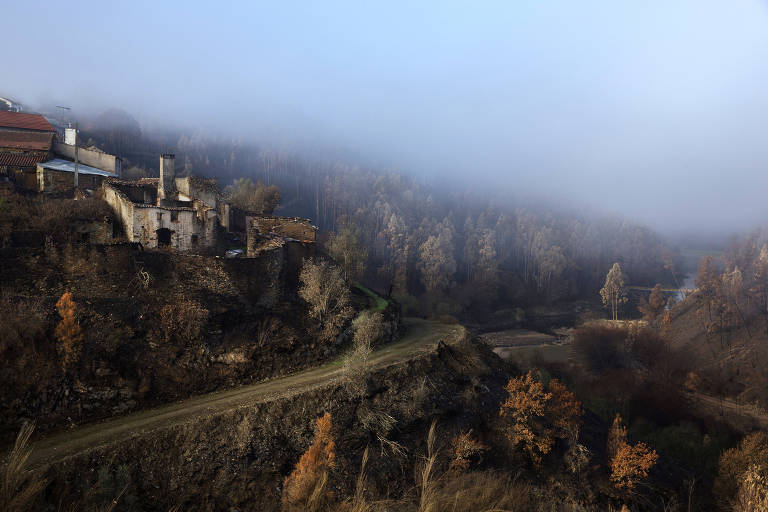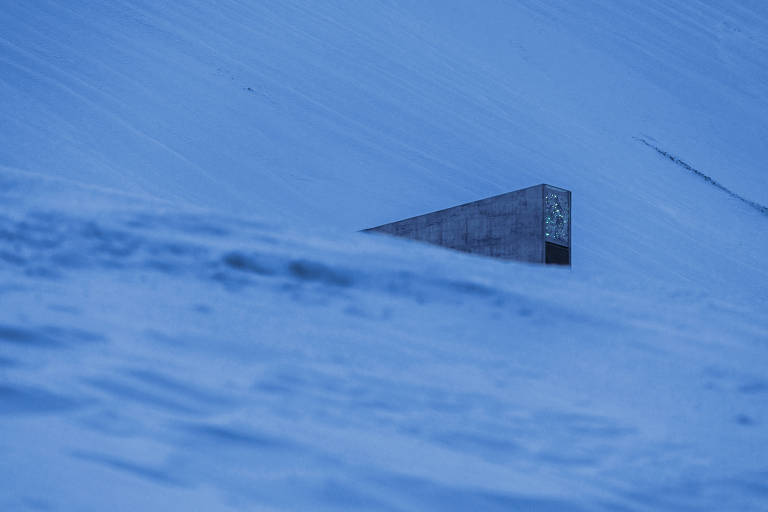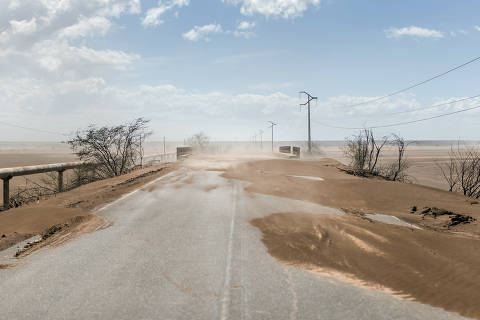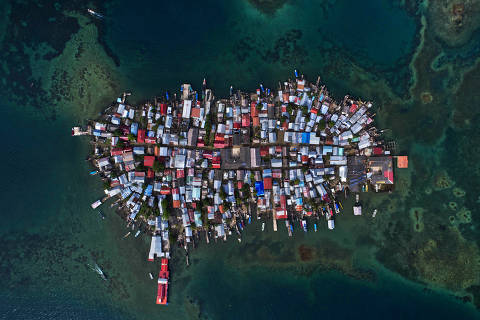peruvian farmer sues german energy company seeks compensation for shrinking glaciers
29.mai.2018 - 02h00
{{video=3}}
{{lang=1|por,//staging.arte.folha.com.br/ciencia/2018/crise-do-clima/peru/|esp,//arte.folha.uol.com.br/ciencia/2018/crisis-del-clima/peru/}}
Juan Victor Morales Moreno, 52, has one of the most solitary jobs in the world. Aside from the occasional foray into the city center of Huaraz every two weeks on his days off, he keeps watch at Lake Palcachoca (elevation 14,967 feet) in the Cordillera Blanca mountain range, a short distance below his stone hut.
Moreno earns 2,500 soles per month (about $765). His mission: report any disturbance he witnesses at the glacier lake to the Regional Operations and Emergency Center for the Ancash region. He does so every two hours, night and day, via radio or satellite phone. The work as guardian of a mountain punished by global warming has already lasted three years.
All of Moreno's attention is focused on the Palcaraju and Pucarana glaciers, which hang ominously 600 meters above the lake's glassy surface. The 25,000 Huaraz residents who live inside the so-called mudslide risk zone depend on the stability of these glaciers.
{{imagem=2}}
Lake Palcacocha became the subject of international attention after Saúl Luciano Lliuya, a local resident, filed a lawsuit against the German energy company RWE. The suit is requesting that the company pay roughly $20,000 of the estimated $4 million cost of a project to ensure the safety and integrity of the lake.
The sought-after amount represents RWE's fair share, based on a 2014 study by Richard Heed of the Climate Accountability Institute, which determined that RWE was responsible for 0.47 percent of global greenhouse gas emissions since 1854.
Remarkably, German courts have allowed the suit to proceed.
{{info=3}}
The threat posed by Palcacocha is real. In 1941, the lake was 30 percent smaller in volume but caused roughly 2,000 deaths in Huaraz when an avalanche of mud and rock cut the town in two on the morning of December 13th.
It is believed that a block of glacial ice calved off and fell into the lake, generating a wave tens of meters high and rupturing a natural dike formed of rocks and sediment.
Only 500,000 cubic meters of water remained in the reservoir, the equivalent of about 200 Olympic swimming pools. With the continuous melting of the Palcaraju and Pucaranra glaciers, this volume has grown by a factor of 34.
{{imagem=1}}
"Last year in May there was an avalanche on Palcaraju Mountain," said warden Victor Morales. "It fell directly into the lake and created a wave three meters [ten feet] high. The wave swept the siphons away to the left side and piled them up like spaghetti."
Morales is referring to the ten black pipes 25 cm (10 inches) in diameter that draw water from the middle of the lake and carry it away to the head of Cojup Creek. The siphon pipes offer a reinforcement to the drainage pipeline that runs under the lake's seven meter levee, constructed after the 1970 earthquake. On its own, the levee is not sufficient to guarantee safe water levels during periods of heavy rainfall and the accelerated melt off that occurs from September to May.
{{video=4}}
According to engineer Luis Alberto Beltrán Flores, it is a temporary –and insufficient– system. Beltrán is a consultant to the Ancash regional government for the Palcacocha Lake works project, as well as for 22 other glacial lagoons.
The goal is to lower the level of Palcacocha even further. A levee of reinforced concrete three times as high (20 meters) will need to be constructed in order to ensure the integrity of the lake.
For the time being, only the terms of reference for the bidding process have been announced. Federal budget approval will be required in order to contract a company to lead the engineering project.
{{imagem=9}}
Standing next to Beltrán on the mountain, Mirtha Cervantes, Secretary of Environment and Natural Resources for the Ancash regional government, notes that the implementation of an early warning system is underway.
The system will involve the use of sensors, audible signals and evacuation protocols for the mudslide risk area during the brief 40-minute interval between the time an "event" occurs at Palcacocha Lake and when the resulting mudslide could potentially devastate Huaraz. For now, though, everything is still in the hands –or, rather, in the eyes and ears– of warden Victor Morales.
After delivering his report over the radio, the Palcacocha caretaker serves mugs of milk with boiled sweet rice to visitors exhausted from the altitude. It is 10 o'clock in the morning. Small avalanches, triggered by the rising temperature, begin their daily murmurs on the Palcaraju and Pucaranra glaciers in the distance.
None reach the lake.
{{imagem=3}}
37-year-old farmer and mountain guide Saúl Luciano Lliuya speaks softly and slowly, with long pauses between thoughts. During the interview, he rolls his eyes back in their sockets, as if searching for the correct words in Spanish (until the age of six, he spoke only Quechua at home).
Llyua's reserved nature contrasts with the image of the intrepid rural guide who safely shepherds tourists along the icy walls of the Cordillera Blanca –and who also had the gumption to sue an energy giant on German soil.
His love for the mountains has triumphed over his shyness, he explains. He feels them running in his veins, just as water during the thaw runs through the surrounding glacial gullies.
{{info=1}}
His father was a porter for mountaineers. As a boy, Luciano was fascinated with all of the the equipment and by the photographs. "I grew up in this environment," he recalls. "At eight years old I was already walking there, [at an altitude of] 4,500 meters, 4,800 meters [approximately 15,000 feet]."
A three-year training course has taught many in this younger generation how to lead groups of tourists; the profession has also become a means of increasing one's income during the dry months, from June to August. During the rest of the year, Luciano plants and harvests potatoes, quinoa, wheat and barley on the family plot in Llupa, a 15-minute drive from downtown Huaraz.
The mountain guide keeps a Toyota station wagon in the garage of his two-story adobe house. He uses it to go to into the city at night for English classes, and on occasions when others hire him to take them into town. Sometimes he spends the night in a second house, which is nearing completion in Nueva Florida, a neighborhood in the Lake Palcacocha mudslide risk zone.
"When I started out as a guide in 2002, everything was beautiful," he recalled. "In subsequent years on the mountain, I saw [the glaciers] getting smaller and smaller."
{{imagem=5}}
{{imagem=12}}
He had already heard of global warming at school. While researching glacial thawing, lakes and alluvial fans (deposits of sediment and debris), he discovered that there was a connection with climate change: "All of this is caused by pollution, by industries, a whole chain of relationships," he says.
"It affects you. You're losing something. On top of it, we knew that Palcacocha was a lake that was at increased risk," he said. "I asked myself what I should do. What will happen when there are no more glaciers, and not enough water?"
Continuous glacial runoff not only puts the lakes at risk of collapsing. The process also threatens the very future of Peru, as the country's water supply may soon no longer be sufficient to generate electricity and provide water for the population. One third of Peruvians live in the capital city of Lima, and almost all are dependent on meltwater for drinking.
When the 20th international conference on climate change was held in Lima in 2014, Luciano met José Valdivia Roca of the NGO Wayintsik ("our house" in Quechua). Valdivia introduced Luciano to Noah Walker-Crawford, a young, German-born American anthropologist who worked for the NGO Germanwatch.
An idea then emerged out of the many conversations on how to respond to the destruction of the Cordillera Blanca: to hold the agents of climate change accountable. RWE was selected because of its status as the largest greenhouse gas emitter in Europe and because Germanwatch could help obtain legal advice in Germany, where the energy company was headquartered.
{{imagem=11}}
Luciano says that in Peru, it can be quite dangerous to face a company –such as a big mining concern– in court. "Suing a company there [in Germany] made me worry," he says. "I thought about it for a while, a couple of months. I decided to do it, because I really didn't see any other option." The legal action got underway in 2015.
The farmer-guide ended up making three trips to Germany for the lawsuit, which earned him a few skeptics in town and in the city. Some believe that Luciano is getting paid to pursue the case –though, if he succeeds, the 17,000 euros are earmarked for the local and regional governments, not for him.
Against all expectations, the case has moved forward. After the claim was initially dismissed in an Essen court, a November 2017 appeal to a higher court in Hamm rendered a decision that the case was viable under German law (though the court did not rule on its merits).
RWE rejected a settlement offer by the court. The case has since moved to the evidentiary and expert testimony phase, which could last several months. So far, Luciano's legal costs have been covered by donations to a specially-created fund.
It would be a triumph for Luciano if a company contributing to global warming were held responsible for its actions. The farmer says that it is not just about money; it's about getting the perpetrators to contribute to the security of his community in the face of climate change.
{{video=1}}
The 160,000 km² (roughly 62,000 square miles) of glaciers in the Peruvian Andes became a part of civil engineer César Portocarrero's life almost by happenstance. In the end, however, he has become one of the most sought-after glaciologists in his country.
After the 1970 earthquake, Portocarrero had been working on projects to improve the security of the region's glacial lakes when he was asked to pick up Lonnie Thompson, a geologist at Ohio State University, at Lima airport. Portocarrero would accompany the geologist for three months of digging ice core samples, which enabled Thompson to reconstruct a picture of Earth's past climate.
When Thompson observed the young man's interest in fieldwork, he urged Portocarrero to study glaciology and geomorphology in Alaska, then in Ohio and, finally, at Columbia University in New York.
Portocarrero later became the head of the glaciology unit established in Huaraz by the National Water Authority of Peru (ANA). There, he dedicated himself to monitoring shrinking glaciers, especially those that hover threateningly over glacial lakes, with a slope greater than 22 degrees.
{{video=2}}
{{imagem=8}}
The glaciologist says that in the 1970s, the glaciers receded seven or eight meters (23 to 26 feet) per year, on average. In the 1980s, this rose to 20 meters (65 feet) per year. In 2000, it was 25 meters (82 feet). He estimates the decrease in width at four meters (13 feet) per year. Accelerated melting creates a paradox: too much water in the present means a shortage of water resources in the future.
With more meltwater, the lakes expand both in volume and in number. A 2003 ANA assessment reported 830 glacial lakes in the Cordillera Branca range; a decade later, there were 860. But just 23 of them –Lake Palcacocha first and foremost– pose a risk of producing mudslides in the Ancash region.
{{info=2}}
Portocarrero estimates that between 10,000 and 14,000 people could perish in a disaster similar to the one that occurred in 1941. Even when the early warning system being developed by the regional government is fully operational, fatalities could still reach 7,000.
"The Cordillera Blanca is the largest mountain range we have," he said. It supplies one of the most important irrigation projects in Peru, Chavimochic, in the La Libertad region. Lands that were arid 40 years ago are now full of green crops harvested for export.
The agricultural sector uses 89 percent of the water in Peru and, of this 89 percent, 65 percent of it is wasted, according to Portocarrero. "We need to begin working on more efficient uses of water in order to adapt to the problems brought about by climate change," he explains.
{{imagem=7}}
"Glaciers are daughters of the climate," he continues. "They grow when there is sufficient amounts of cold and precipitation and they shrink during the hot seasons." Evidence suggests that over the last 800 thousand years there have been 11 cooling periods.
"Earth's climate has always been cyclical, with cooling and heating, cooling and heating," explains the glaciologist. "We're currently experiencing a period of warming, between cooling periods, and the peak occurred 18,000 years ago."
This "last summer" that we are presently experiencing has a particular characteristic, says Portocarrero: "Man, in his eagerness for industry and development, is accelerating the warming like nothing that has been seen before." And, with this, Peru's water tank is being emptied.
{{imagem=4}}
Saúl Luciano Lliuya invites the reporters to lunch. We are on the upper floor of the house, which has two rooms: a large, low-ceilinged room, with books by alpinists Jon Krakauer and Reinhold Messner, along with ropes, boots and carabiners. There is also an anteroom in which additional climbing equipment mingles with hundreds of multicolored ears of corn.
On the ground floor, Luciano's wife, Lidia, prepares a quinoa stew with chili and potatoes on the wood stove, served with rice. Except for the latter, all the ingredients come from the surrounding fields, grown by the men of the village with the help of oxen to plow the land.
The drink is a diluted, sweet infusion, "mint water," made from a plant that women grow and sell in the market. At the back of the kitchen, the squeals of cuyes (the Quechua word for guinea pigs) make a noisy, incessant commotion. The animals are common in Quechua homes, a delicacy typically reserved for birthdays and wedding celebrations.
Luciano travelled across the world to fight against global warming and was amazed by the quality of European life. Like most Peruvians, however, he still depends on the glaciers to put food and drink on the table.
"I'm worried about the mountain. We live beneath it, we drink the water that comes down from it. As tour guides, we work on the mountain. We eat and we support our children thanks to the mountain," he says.
"The mountain is everything to me."
{{imagem=6}}
